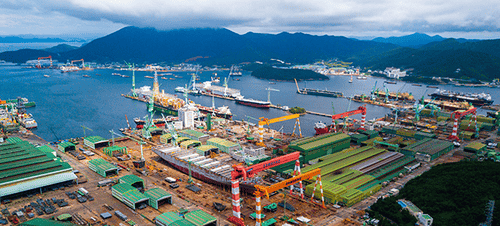South Korean shipbuilders have been under severe financial strain since 2008 and are suffering from tougher competition from Chinese rivals.
Samsung Heavy Industries, one of South Korea’s Big Three shipbuilders, has named Joonou Nam as its new CEO, after Park Dae-young resigned following earnings losses that cost the company nearly a third of its market capitalization.

South Korean shipbuilders have been under severe financial strain since 2008 and are suffering from tougher competition from Chinese rivals. “The silver lining for global shipbuilders does not reach Korea,” says Roger Zbinden, head of Swiss Business Hub South Korea. “The top three builders—Samsung Heavy Industries (SHI), Hyundai Heavy Industries (HHI) and Daewoo Shipbuilding & Marine Engineering (DSME)—present a gloomy outlook for 2018.” The past two years were catastrophic for Korean shipping, and all three companies reported heavy losses and unhealthy levels of debt. Zbinden says SHI expects 2018 sales of 5.1 trillion won [$4.7 billion], a drop of 35%; whereas HHI is planning for a sales decline of 11%. DSME already reports a 31% decline in sales for 2017.
The threat from China is hurting South Korea’s liquefied natural gas (LNG) carrier, very large crude carrier and offshore-plant sectors. More worrisome has been the loss to Singapore of offshore-plant orders that South Korean companies were expected to receive. Winning bids from Chinese and Singaporean shipbuilders were much lower than those of Korean shipyards, due to much lower labor costs (Singapore is attracting cheaper labor from Southeast Asia).
“Industry analysts say that the Korean shipbuilding industry should move away from traditional heavy oil combustion to environmentally friendly engines using LNG. Such a technology change might generate some bright spots for components makers,” Zbinden suggests.
Nam will face pressure to reposition Samsung Heavy away from struggling industries such as offshore drilling in favor of more attractive market alternatives. For now, Samsung Heavy has made a $1.4 billion new share issue, following a $1 billion issue in 2016, which will be used to pay down debt and reduce the risk of banks limiting lending due to its weak earnings prospects.



